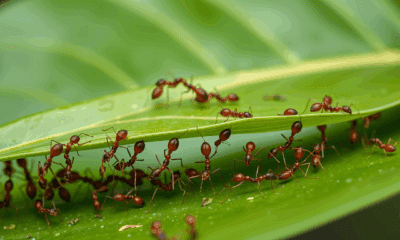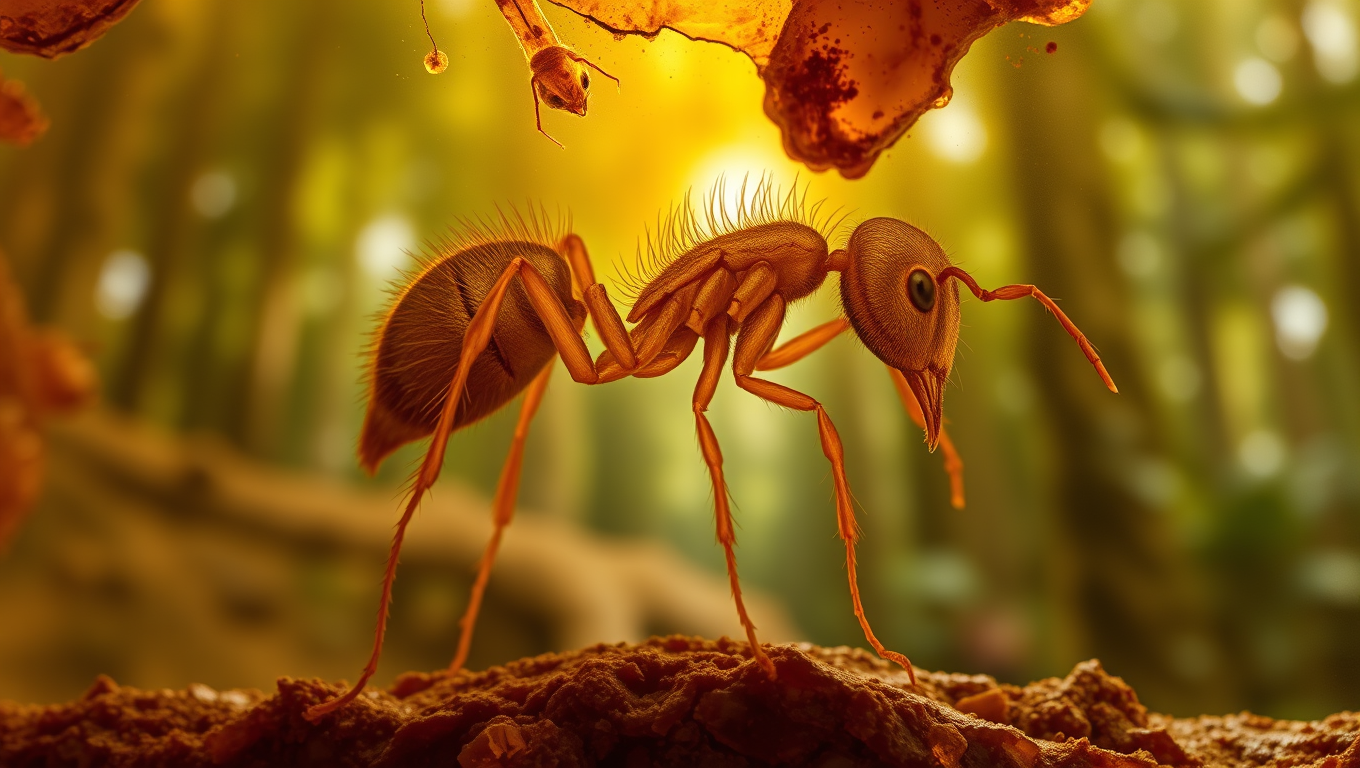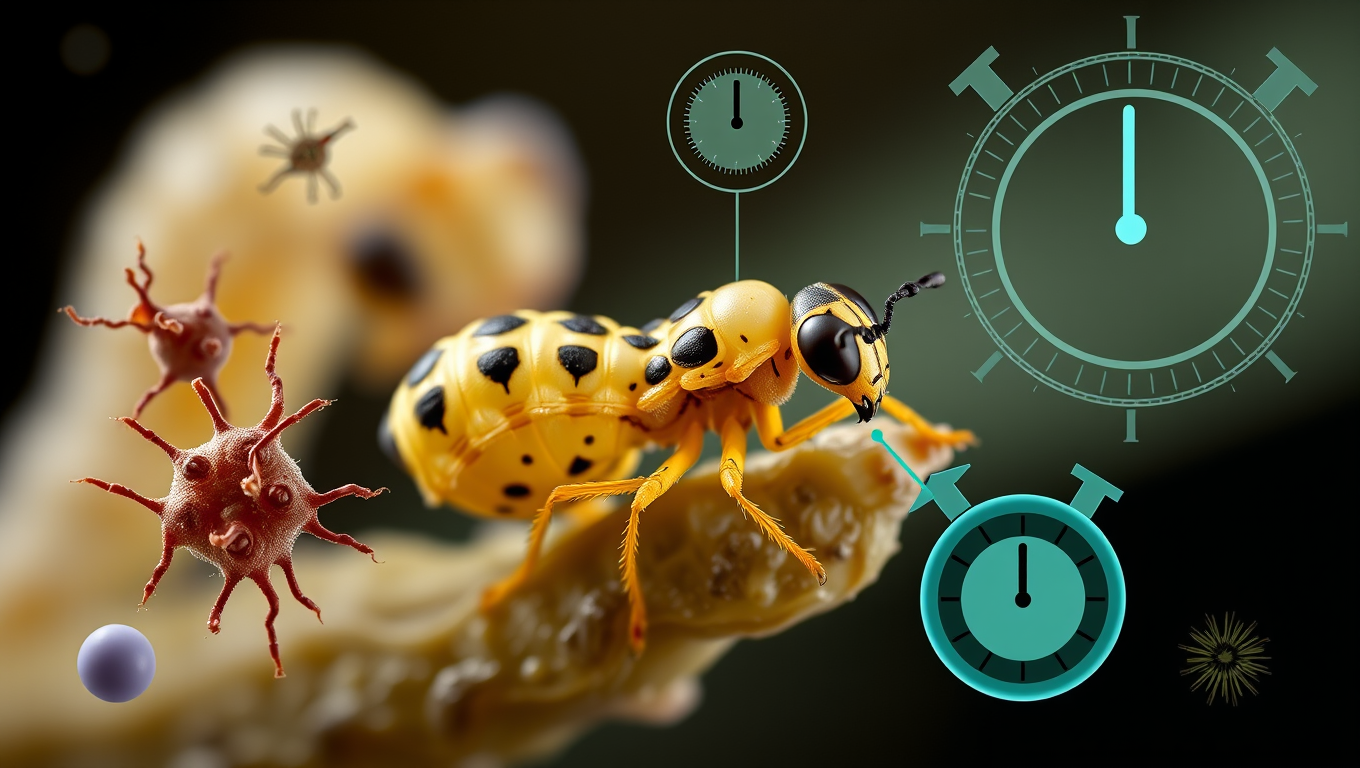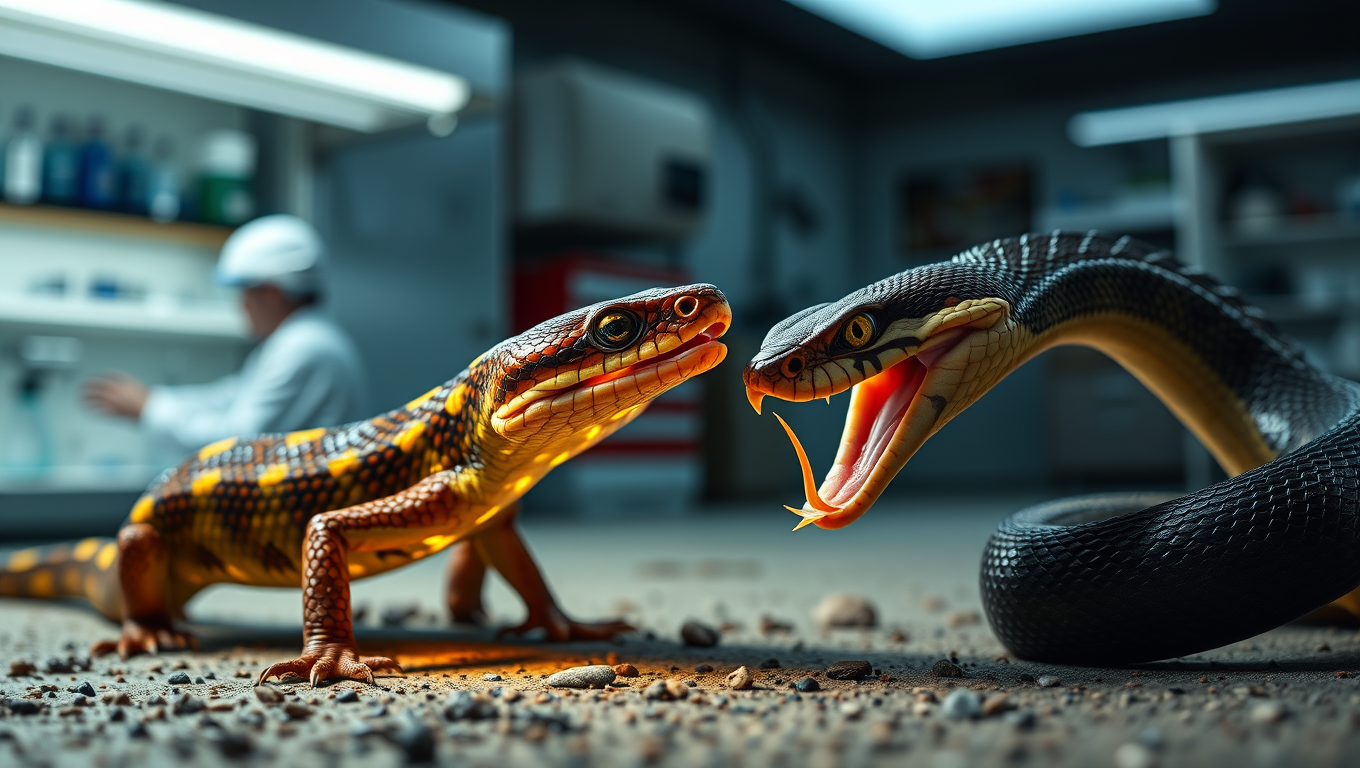While we try to keep things accurate, this content is part of an ongoing experiment and may not always be reliable.
Please double-check important details — we’re not responsible for how the information is used.
Animals
The High Cost of Avoiding Parasites: How Fruit Flies Sacrifice Sleep for Survival
Some fruit flies sacrifice sleep to avoid parasites like mites. Researchers discovered marked differences in gene expression related to metabolism in the hypervigilant flies.
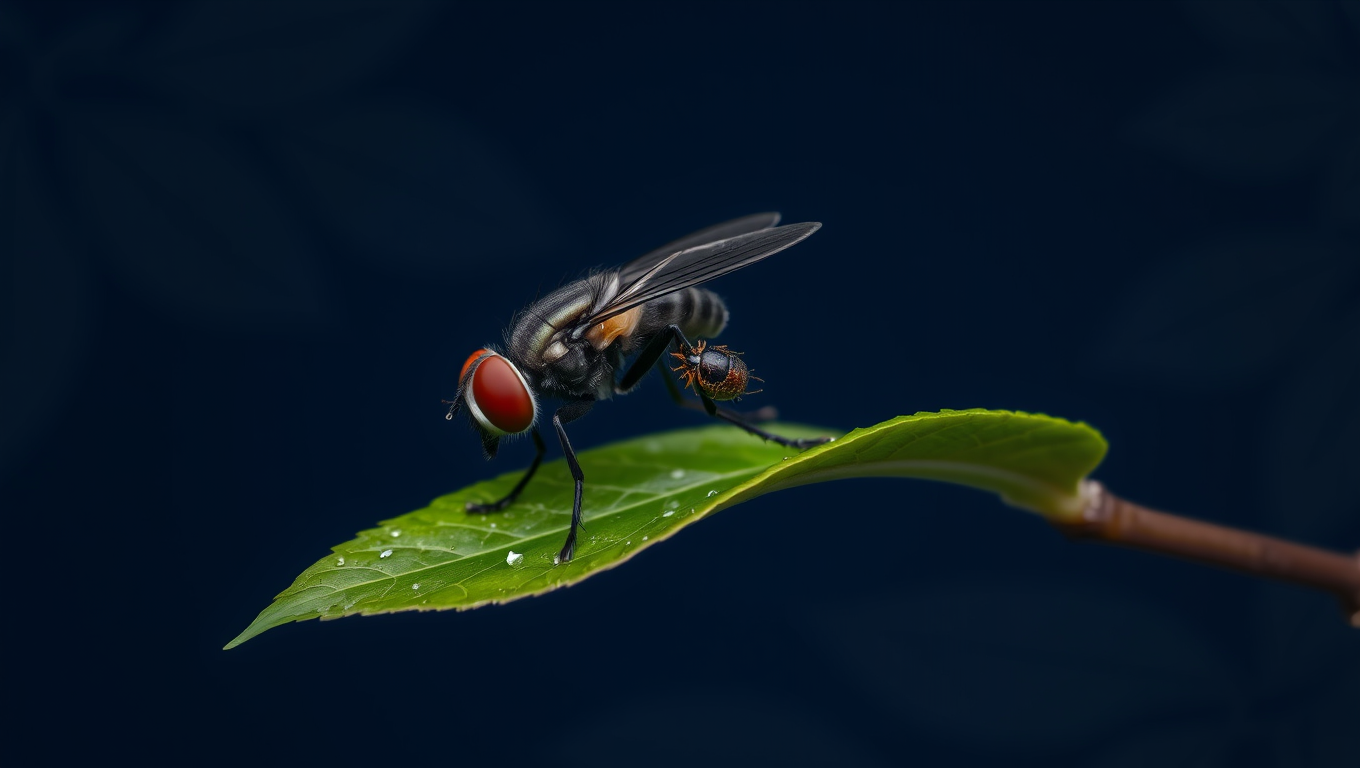
Animals
Unveiling the Ancient Secrets of the Dirt Ant: A 16-million-year-old Fossil Reveals the Smallest Predator Ant Ever Found
A fossilized Caribbean dirt ant, Basiceros enana, preserved in Dominican amber, reveals the species ancient range and overturns assumptions about its size evolution. Advanced imaging shows it already had the camouflage adaptations of modern relatives, offering new insights into extinction and survival strategies.
Animals
Nature’s Anti-Aging Hack? Jewel Wasp Larvae Slow Their Biological Clock
Scientists discovered that jewel wasp larvae that undergo a developmental “pause” live longer and age more slowly at the molecular level by nearly 30%. This slowdown is tied to conserved biological pathways, hinting at possible applications for human aging.
Animals
“Nature’s Armor: Scientists Uncover Gene Behind Aussie Skinks’ Immunity to Deadly Snake Venom”
Australian skinks have developed a remarkable genetic defense against venomous snake bites by mutating a key muscle receptor, making them resistant to neurotoxins. These tiny but powerful molecular changes mirror those found in cobra-resistant mammals like mongooses and honey badgers. This evolutionary arms race not only shows how adaptable life can be but also offers exciting possibilities for creating new antivenoms and therapies in human medicine.
-

 Detectors8 months ago
Detectors8 months agoA New Horizon for Vision: How Gold Nanoparticles May Restore People’s Sight
-

 Earth & Climate9 months ago
Earth & Climate9 months agoRetiring Abroad Can Be Lonely Business
-

 Cancer9 months ago
Cancer9 months agoRevolutionizing Quantum Communication: Direct Connections Between Multiple Processors
-

 Albert Einstein9 months ago
Albert Einstein9 months agoHarnessing Water Waves: A Breakthrough in Controlling Floating Objects
-

 Earth & Climate9 months ago
Earth & Climate9 months agoHousehold Electricity Three Times More Expensive Than Upcoming ‘Eco-Friendly’ Aviation E-Fuels, Study Reveals
-

 Chemistry9 months ago
Chemistry9 months ago“Unveiling Hidden Patterns: A New Twist on Interference Phenomena”
-

 Agriculture and Food9 months ago
Agriculture and Food9 months ago“A Sustainable Solution: Researchers Create Hybrid Cheese with 25% Pea Protein”
-

 Diseases and Conditions9 months ago
Diseases and Conditions9 months agoReducing Falls Among Elderly Women with Polypharmacy through Exercise Intervention









